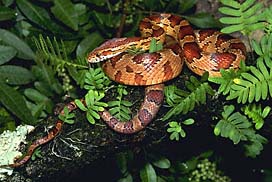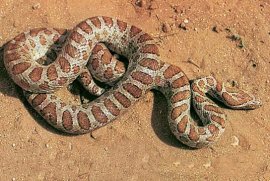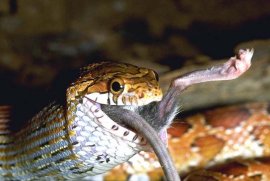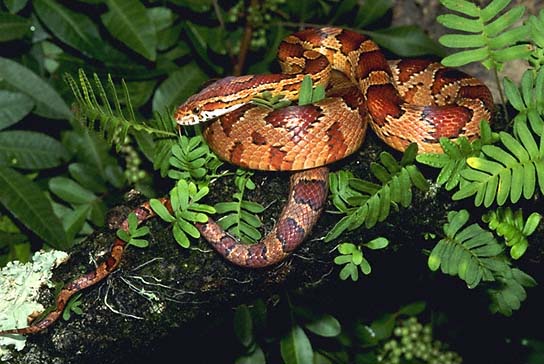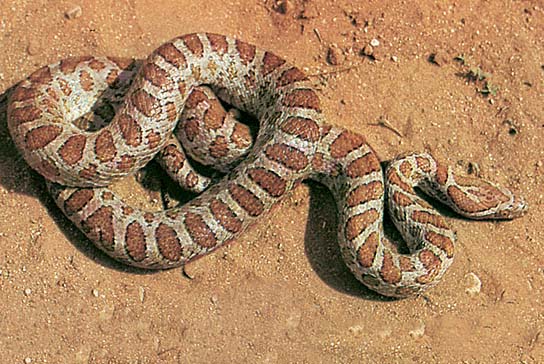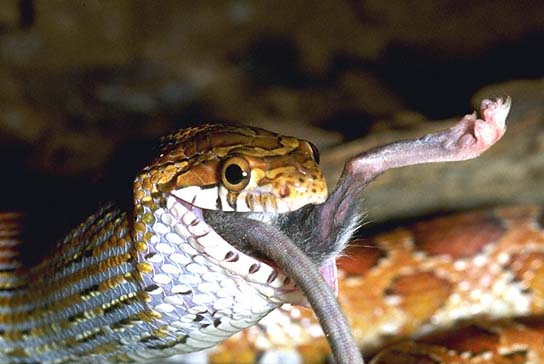Snakes
Description
24-72" (61-182.9 cm). Long and slender; orange or brownish-yellow to light gray, with large black-edged red, brown, olive-brown, or dark-gray blotches down middle of back. Two alternating rows of smaller blotches on each side, extending onto edges of belly scales. Large squarish black marks on belly, becoming stripes under tail. Dark spear-point mark on top of head, and dark stripe extending from eye onto neck. Belly scales flat in middle, with ends angled up sharply. Scales smooth or weakly keeled, in 27-29 rows. Anal plate divided.
![]()
Warning
When cornered, a Corn Snake may vibrate its tail like a rattlesnake and strike with impressive speed. Its bite is not venomous. It is sometimes confused with the venomous Copperhead, which has a narrow neck and a large triangular head that is plain and unmarked. In contrast, the Corn Snake's head is not noticeably wider than its neck, and there is a marking on the top of the head, often shaped like a spearhead.
Breeding
Mates March to May. Clutches of 3-21 eggs are laid late May to July, hatch July to September. Hatchlings are 10-15" (25-38 cm) long, mature in 18-36 months.
Discussion
Primarily nocturnal, but often active in early evening. It readily climbs trees and enters abandoned houses and barns in search of prey: mice, rats, birds, and bats. The name Corn Snake probably originated not from an association with barns and corncribs but from the similarity of the belly markings to the checkered patterns of kernels on Indian corn. It is one of the most beautiful snakes in our range. Captive longevity is 21 3/4 years.

